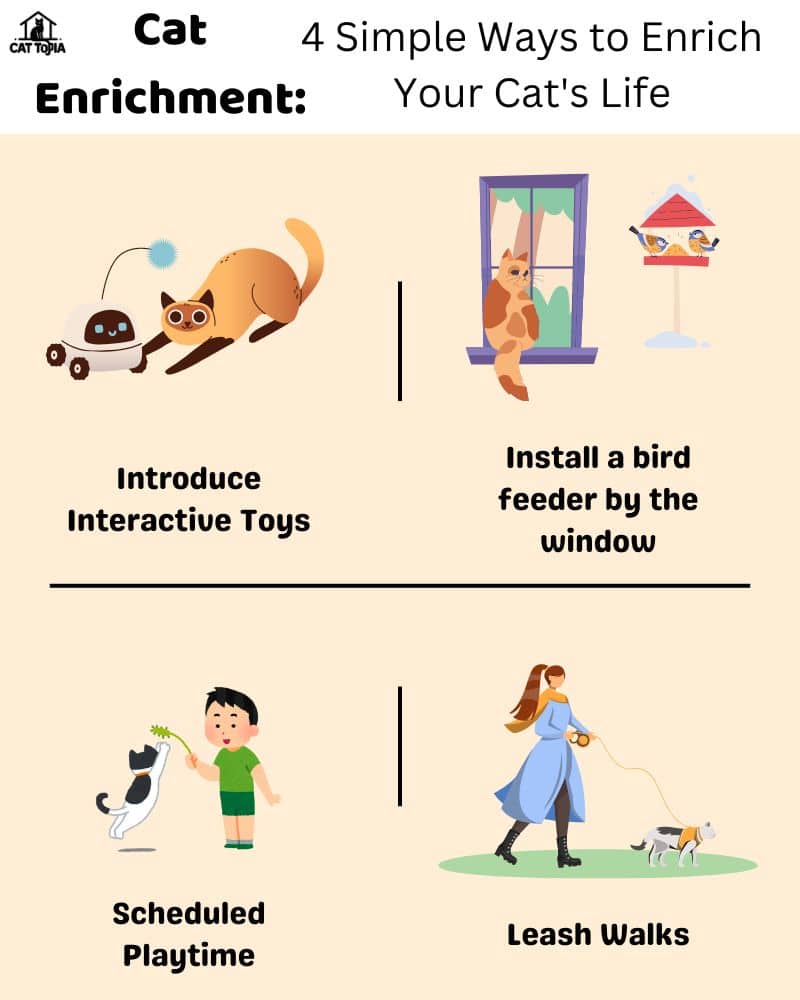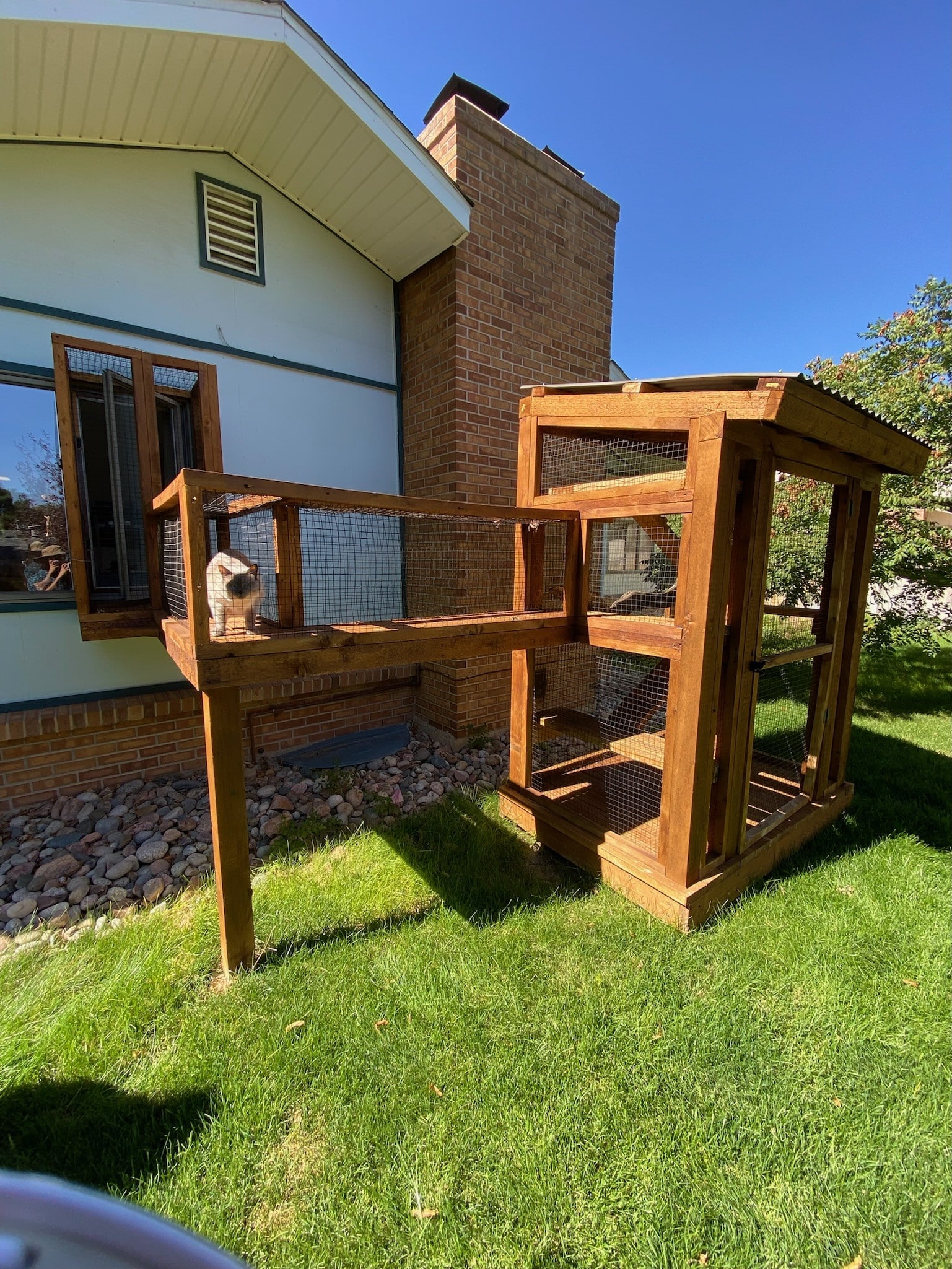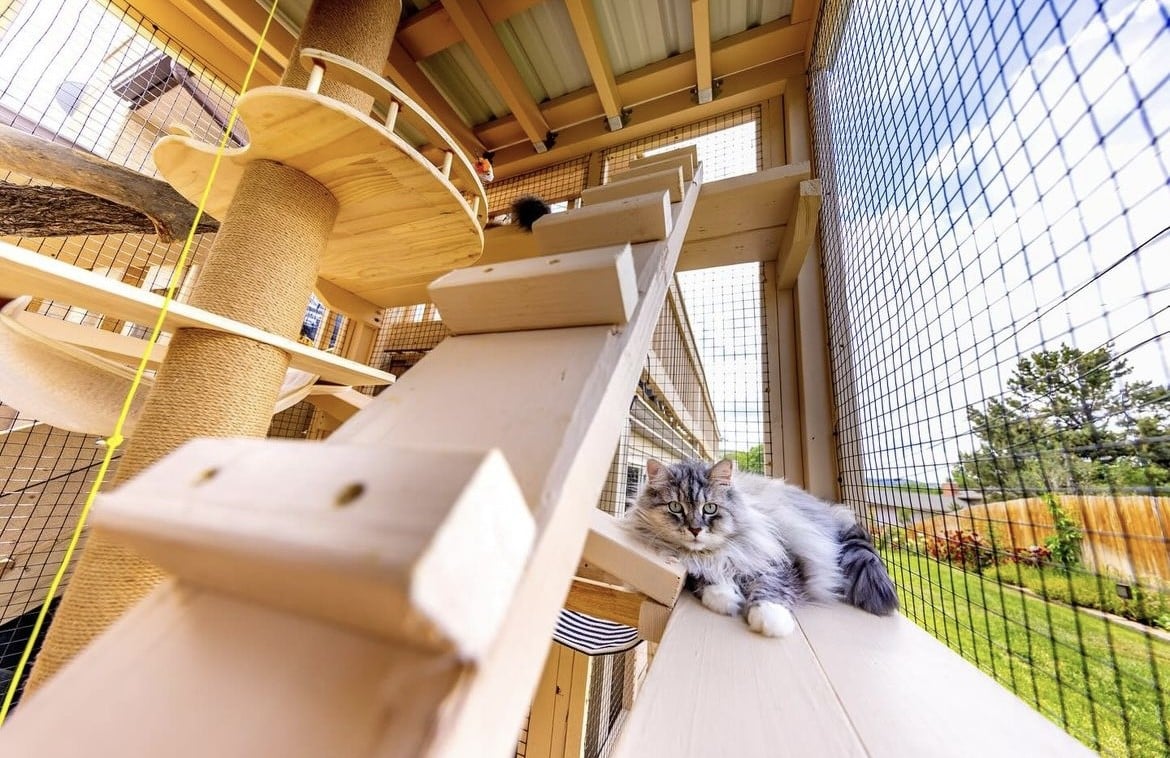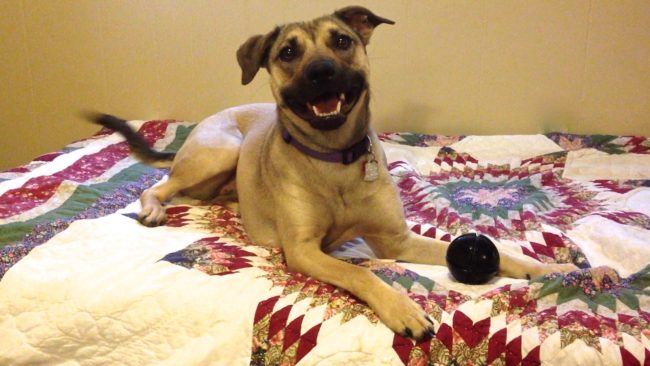Meet the faces of Homeward Pet Giving Tuesday 2023
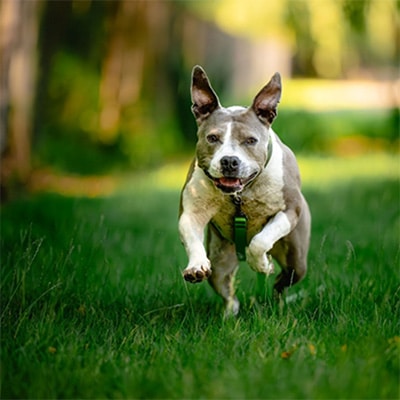
 Lola’s Journey Home
Lola’s Journey Home
As Giving Tuesday comes to a close, I’ve been reflecting on why I’m an avid supporter of Homeward Pet. It goes back to the summer of 2020 when I took in an acquaintance’s dog after she’d escaped from their home twice in the short time they’d had her. They asked me for help when they realized they couldn’t give Lola what she needed. Lola really needed a home with another dog to help her cope with anxiety. After fostering 60+ dogs, I was sure that my friendly dogs would boost Lola’s confidence and help her “learn how to dog” until she was ready to be adopted.
Lola was comfortable around other dogs but fearful and avoided contact with people. She was not at all aggressive, but didn’t like to be touched, wouldn’t eat with people in the room, and wouldn’t move around the house or go outside without a doggy helper to keep her company. Additionally, from what I knew about Lola’s background, it didn’t appear she’d ever had any vet care.
After another shelter wouldn’t accept Lola as an owner surrender, I reached out to Homeward Pet. Lola needed vet care and I needed support from dog behavior experts. Within 24 hours, Homeward Pet had agreed to take her in as an owner surrender and accepted me as a new foster volunteer. Homeward Pet’s Vet Clinic examined her, administered vaccinations, and spayed her. The Behavior Team consulted with me on Lola’s behavior and gave me pointers for monitoring body language, letting her make good choices, made suggestions about introducing her to other people, how to address her mild separation anxiety, and how to approach training at a pace that would build her confidence and not increase her anxiety.
Everything Homeward Pet did during this time was individually tailored to Lola’s specific needs. The shelter modified their normal intake, foster and adoption processes in ways that served Lola best and minimized her anxiety.
I fostered Lola for six months and, in that time, I became a Homeward Pet supporter for life. They truly “live their commitment” to give every animal the individual time and care needed to be ready for their adoptive home. It was no surprise to anyone when Lola and my other dogs decided she was already home, and I ended up adopting her. Today Lola still has some quirks that will probably be with her for life, but she’s relaxed and comfortable with people once she gets to know them and brings smiles to people we see on walks with her goofy grin and exuberant full body rolls.
I decided to give back by serving on Homeward Pet’s Board, fostering dogs when I can, and digging deep to donate to the programs that make Homeward Pet so special. There are many deserving animal welfare organizations in the area, but none, in my mind, more deserving than Homeward Pet.
Since I started volunteering for Homeward Pet, I’ve witnessed the shelter’s same commitment to many other dogs and cats that need medical care and behavior support so that they can live happy lives in adoptive homes.
Please join me in supporting Homeward Pet with a heartfelt donation during this holiday season. Every single donation makes a difference.
Sincerely,
Victoria Mabus
Board of Director Member and foster volunteer
Homeward Pet Adoption Center
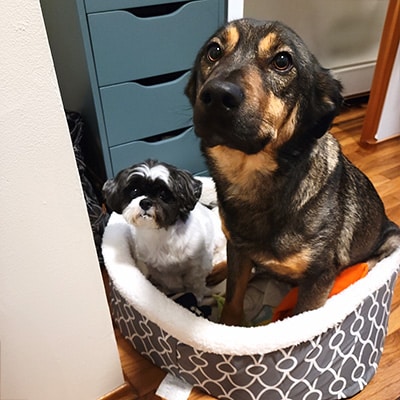 Transforming Fear to Trust: Bowie’s Journey and why your support matters
Transforming Fear to Trust: Bowie’s Journey and why your support matters
How do you help an animal that won’t interact? That was the problem we faced when Bowie and his brother Magnet came to Homeward Pet. Here were two beautiful, healthy dogs who had spent their lives outdoors, away from human contact, and had developed no trust in people. When they came to Homeward Pet, these boys kept to the back of their kennel whenever anyone approached.
Homeward Pet’s Behavior Senior Manager, Jenny Black, evaluated both dogs as individuals even though they came in together. She saw what these boys needed, and the persistence and patience it would require. She engaged the Behavior Team, a group of experienced volunteers, which I am proud to be part of. We worked with both dogs multiple times a day. At first, we would sit outside their kennel, talking to them and tossing them treats to help them build confidence and trust.
We knew the care plan would take time – weeks or even months. While this is problematic at many shelters, Homeward Pet has the unique combination of trained staff, dedicated volunteers, and the ability to invest time in individual animals to prepare them for success in their future home.
Eventually, we were able to be inside the kennel with them. I remember the breakthrough day when Bowie stayed with me and let me pat him for the first time. I knew we were getting through! After deciding to train the brothers separately, we were able to acclimatize Bowie to his harness and leash, eventually taking him on walks.
Bowie began to thrive. He became more curious, more adventurous, and more engaging. It wasn’t long after that I took him for a walk and thought “finally – he’s just a normal dog!”
Bowie was adopted almost a year ago and continues to thrive in a loving home. Your dedication and support is why Homeward Pet can say yes to animals that may need more support in learning to be a well-adjusted household pet.
This dedication is one of the many reasons I support Homeward Pet, with my time as a Board Member and Behavior Modification Volunteer, and financially as a donor.
Today, on Giving Tuesday, I ask you to join me, and donate to support all the future Bowie’s that Homeward Pet will say yes to.
Sincerely,
Peter Bergler
Board of Director Member
Homeward Pet Adoption Center
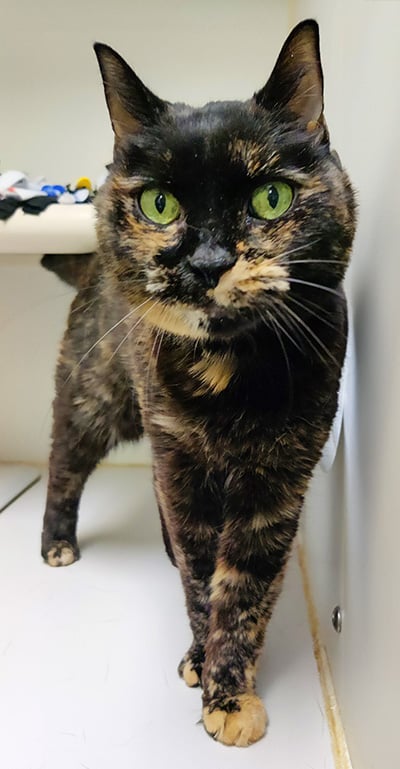 Meet Sophie: Resilient, Loving, and the power of second chances
Meet Sophie: Resilient, Loving, and the power of second chances
You know those cats that are always happy to see you, no matter the circumstance? That is Sophie. Sophie is a gorgeous 12-year-old tortoiseshell cat. Torties are usually considered the “divas” of the cat world, so you’d think she’d have some sass in her. But she ended up being one of the sweetest cats I ever encountered at Homeward Pet.
When Sophie first arrived at Homeward Pet, she was lethargic, wasn’t eating well, and was bit timid. After the clinic ran multiple tests, Sophie was diagnosed with both thyroid and kidney disease. Sophie was immediately started on meds to treat the symptoms and help her feel better.
I was fortunate to visit her on numerous occasions. At first, she was very shy and scared. But slowly she blossomed and started feeling better! During the last few times I visited her, she came out of her cat cave, purring and happy to see me. I learned that she loves head and chin scratches and is the ultimate lap cat. Once she started feeling better medically and less shy in her environment, she became the same way with everyone at the shelter.
Homeward Pet gifts their residents with whatever amount of time it takes for them to be ready to open up to the possibilities of a new home. Sophie took a little longer than many, but, for those of us who love the animals we get to interact with during their stay, that is often a bonus – for both us and them.
Sophie exemplifies why I chose to volunteer at Homeward Pet. Cats come to us from all over Washington State and have pasts that represent many circumstances. The older cats can be overlooked because it is hard to resist an adorable kitten. However older cats, like Sophie, are very special too and have so much love to give. Homeward Pet allowed Sophie time to showcase that she is a sweet and loving companion. And this time allowed her to select the perfect next home.
I hope we can count on your support for cats like Sophie that need a little extra time.
Sincerely,
Shannon Kilpatrick
Member of the 2023 HPAC Board of Directors and Volunteer
Homeward Pet Adoption Center
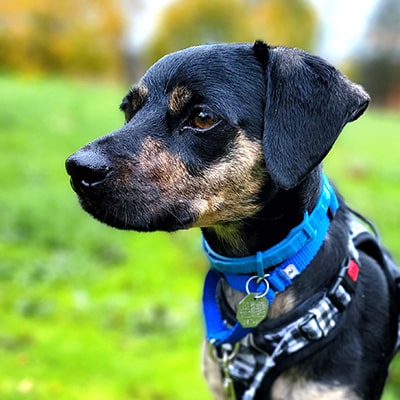 Finding Joy in Shelter Pets: Scarlett’s Journey and how you can help
Finding Joy in Shelter Pets: Scarlett’s Journey and how you can help
When I tell people I volunteer at an animal shelter, a response I receive far too often is, “ohhh…that must be hard.”
Which is funny, because when I think of the time I spend with the dogs and cats at Homeward Pet, it’s the easiest thing in the world. And only one word truly captures my experience:
Joy.
Soul-bursting, beaming, ear-to-ear-grinning joy.
The kind of joy that sticks with you no matter how much fur ends up all over your clothes. How much poop you clean up on a particularly messy morning. How much drool ends up all over your face from a rambunctious 125+ pound pit mix who is quite convinced that, yes, she IS a lap dog.
It’s this joy that keeps me coming back week after week.
Currently, I have a favorite little pint-sized snuggle buddy. When we first met, Scarlett was so shy and under-socialized that just sitting in front of her kennel was a Big Deal for her to grapple with. Was that hard to see? Absolutely. But, at Homeward Pet, devoting time, love, patience, and the invaluable expertise of our staff and volunteers to transform hard beginnings into happy endings is what we’re all about. Every little blossoming of confidence, every tentative step toward a piece of tossed cheese, every tiny tail wag when a familiar face approached? Now, that’s the stuff we live for. That’s the joy. Watching Scarlett transform from an anxious new arrival to a rambunctious, acrobatic ball-of-bounce who will gladly jump several feet in the air to lick your face has been priceless. Scarlett has brought us so much joy at the shelter, and I know that when she finds her family, they’ll adore her as much as we do.
This Giving Tuesday, I urge you to think about joy—how much pets have brought into your life, and how little they’ve asked of you in return. And I implore you to celebrate and honor that joy by joining us in making life better for the homeless dogs and cats in our community.
I hope we can count on your support.
Joyfully yours,![]()
Samantha Robertson
Member of the 2023 HPAC Board of Directors, and Volunteer since 2012
Homeward Pet Adoption Center
 Introducing the stars of this year’s Giving Tuesday Stories
Introducing the stars of this year’s Giving Tuesday Stories
As the biggest giving day of the year approaches, I’d like to highlight Homeward Pet Adoption Center. Homeward Pet has been serving our communities for 33 years, bringing together thousands of loving homes and the pets that need those homes.
In addition to making happy pet matches, Homeward Pet is a local leader in offering the community services needed to give a bit of extra assistance to help families keep pets in their homes when difficulties arise. Our in-house Vet Clinic provides spay and neuter services to the public 4 times a month, our animal behavior specialists provide support and referrals to the public in addition to the animals in our care, we operate a pet food bank, and our Home to Home team helps families that need to rehome a pet with tools to do so without putting their pet through a shelter stay.
This week you’ll get to hear the stories of some of the pets whose lives Homeward Pet has transformed — from the volunteers who worked with them while they stayed with us.
You’ll hear from …
Sam, who will share the story of Scarlett, a skittish pup, who is still looking for her forever home.
Shannon who will share a story about Sophie, a cat who needed a little extra time to learn to trust.
And Peter, who will share about Bowie, a dog who spent almost a year at Homeward Pet working through some challenging behaviors before finding someone who would love him and his anxiety.
And you’ll hear my girl Lola’s pandemic story.
If you love animals, I know you’ll enjoy hearing their stories. And if you’re moved by their stories, please join the Board of Directors for Homeward Pet and other supporters by donating to Homeward Pet this Giving Tuesday. Your donations are critical so we can continue to provide the programs that truly transform pets’ lives.
With gratitude,
Victoria Mabus
Dog Lover, Foster Volunteer, Board Member
Homeward Pet Adoption Center
P.S. Check back in on this post throughout the day on Tuesday and Wednesday to read the individual stories of the featured Giving Tuesday pets.

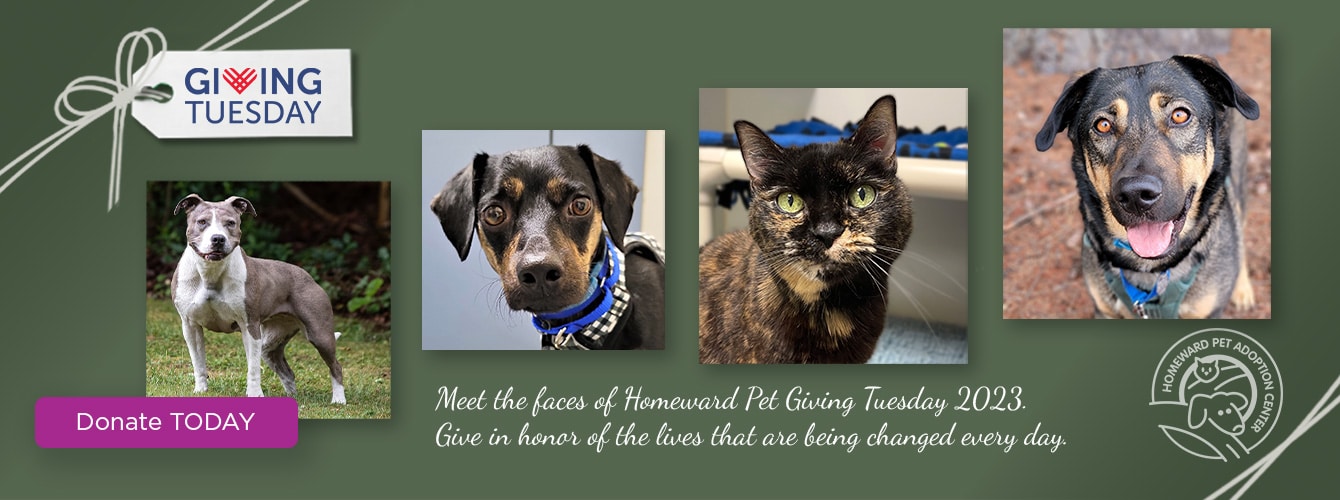












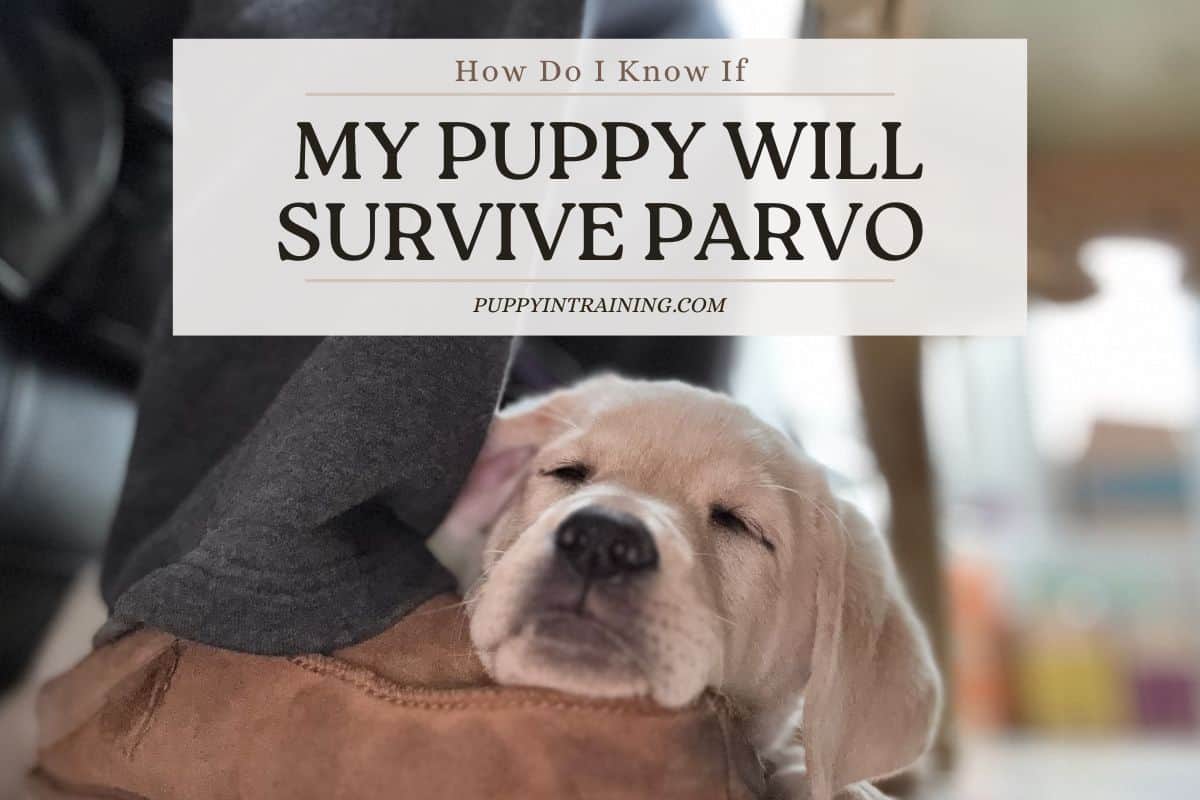




 For cats, the right environment and mental engagement are crucial to staying healthy and happy. Just like humans, cats need more than food, water, and shelter—they need mental and physical enrichment to truly thrive. Without proper enrichment, cats can experience boredom, which may lead to serious health issues. Let’s explore ways owners can add extra enrichment into their lives, such as through a catio.
For cats, the right environment and mental engagement are crucial to staying healthy and happy. Just like humans, cats need more than food, water, and shelter—they need mental and physical enrichment to truly thrive. Without proper enrichment, cats can experience boredom, which may lead to serious health issues. Let’s explore ways owners can add extra enrichment into their lives, such as through a catio.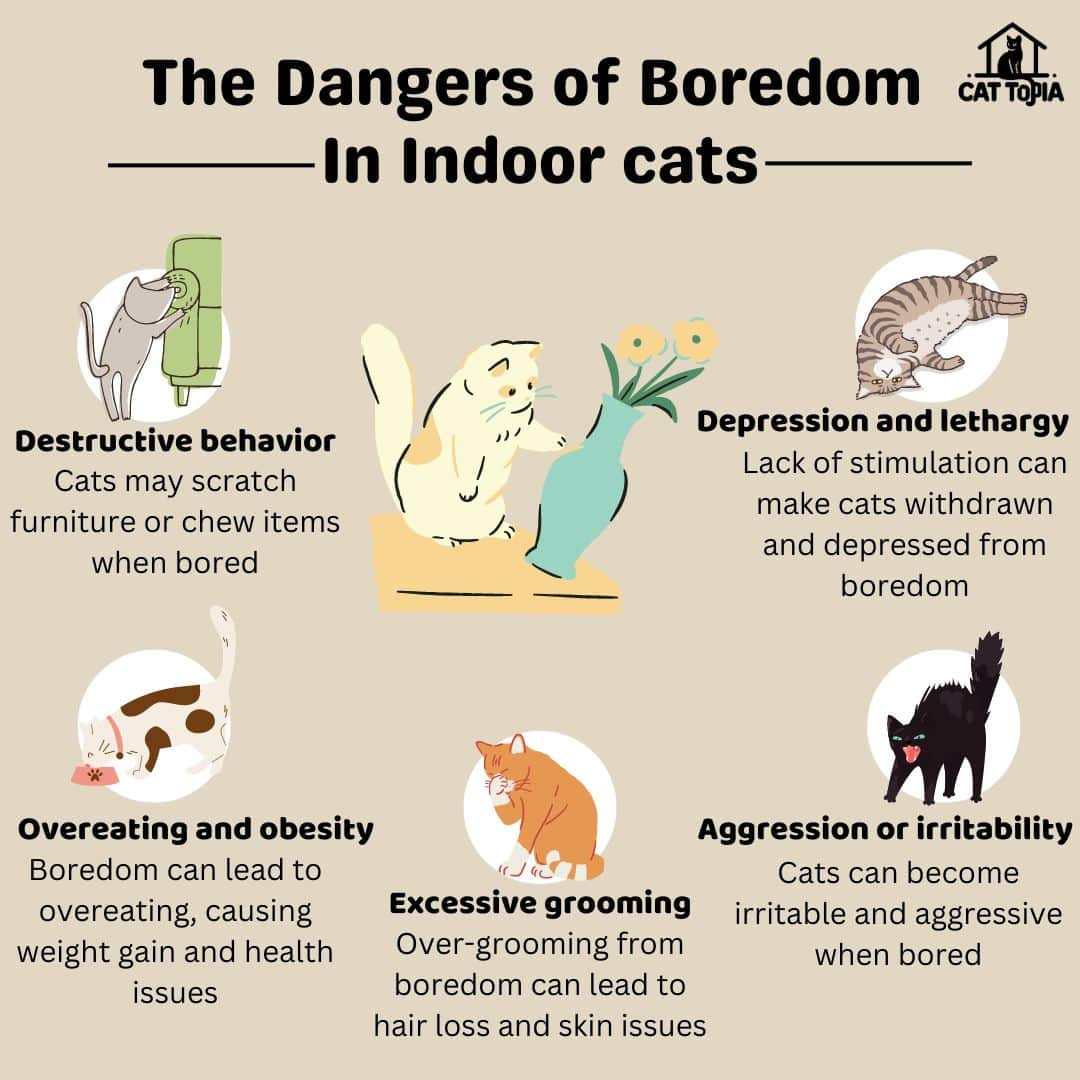 Providing regular, engaging activities helps prevent these issues, making for a happier and healthier pet.
Providing regular, engaging activities helps prevent these issues, making for a happier and healthier pet.